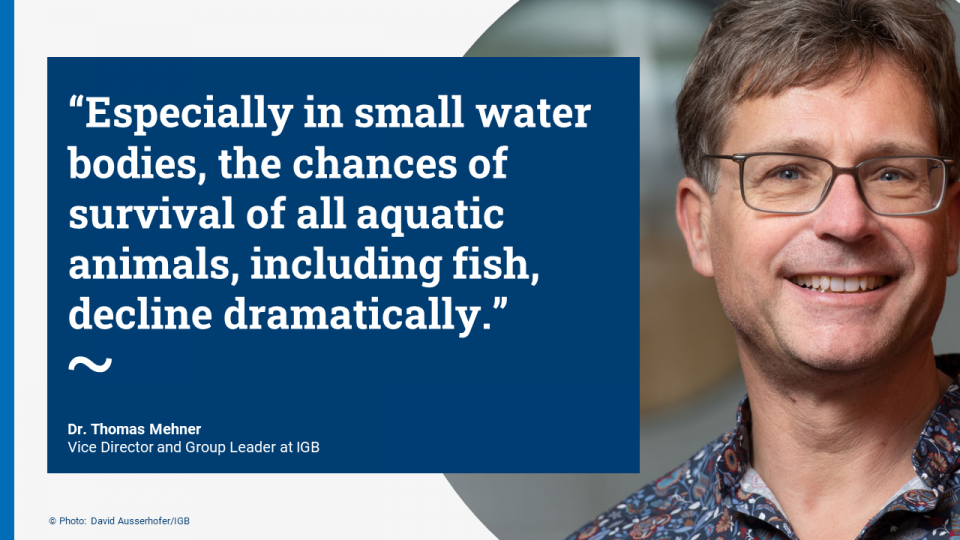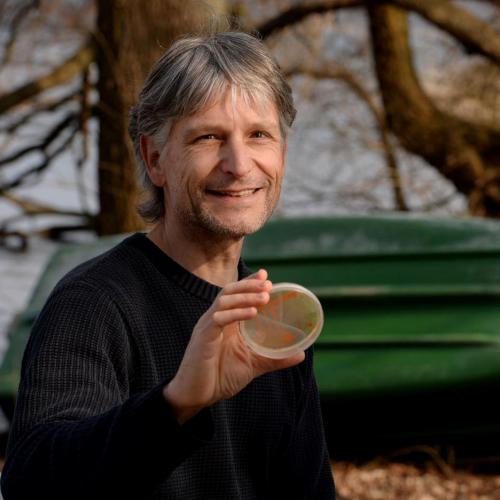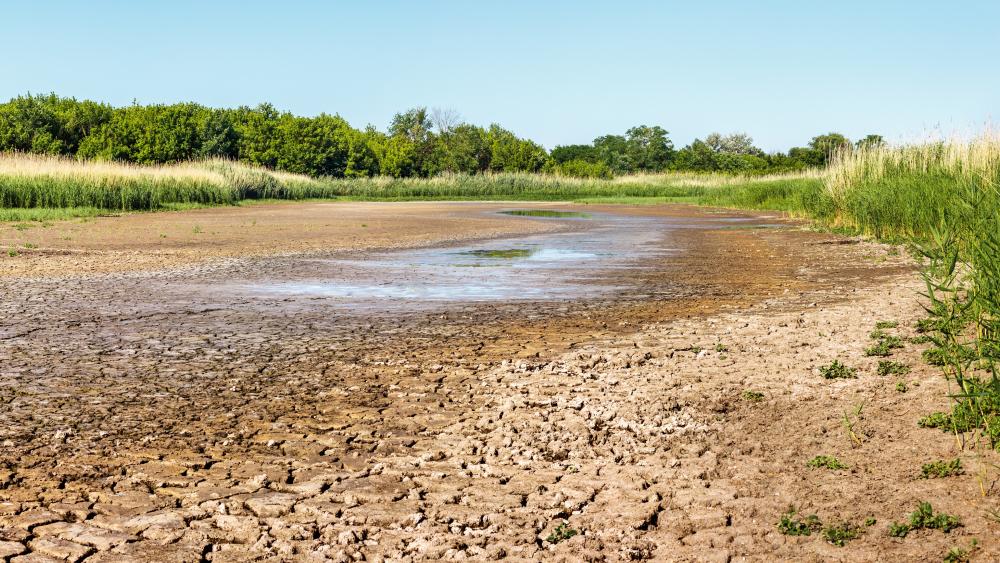
Drying water bodies will become more common in climate change. | Photo: Shutterstock_1902396049

In dry summer months, rivers in urban areas are largely fed by treated wastewater. Examples in Berlin are the Panke and the Erpe. What does this shift mean for tomorrow's wastewater and stormwater treatment, Ms Spahr?
Trace organic contaminants such as pharmaceuticals, cleaning agents, or pesticides are continuously discharged into rivers through wastewater treatment plant effluent. During drought, the concentrations of certain chemicals in surface waters can rise because there is little dilution by groundwater or rainwater. This shows: We need improved wastewater treatment in the future, for example by means of activated carbon or oxidation processes. Besides drought, however, there is the other extreme – heavy rain events. Rain can wash pollutants off roads, houses, or fields and into bodies of water. Preventing this is a challenge. But there is the vision of the sponge city, where stormwater is not directly discharged but kept in the landscape - even in an urban context - and in the best case purified. Stormwater must be perceived much more as a valuable resource. To remove substances such as biocides, flame retardants, or tire wear from stormwater runoff, I study treatment processes using biochar. This has proven to be an inexpensive and effective method. For Berlin and many other cities, I would like to see climate-adapted wastewater and stormwater management that always takes water quality into account in order to feed and protect groundwater and the many surface waters.
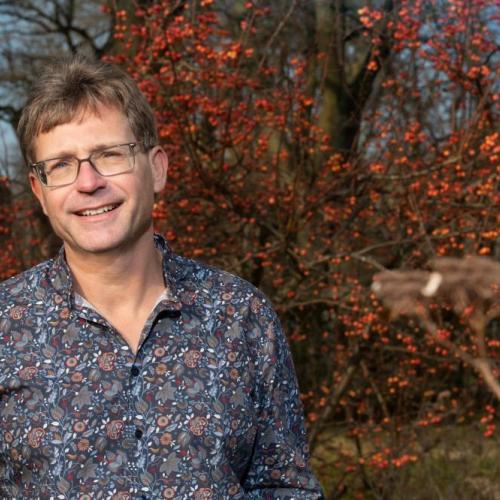
Sure, fish need water. But at what point is it no longer enough, Mr Mehner?
Well, there are species that actually may profit from the changes – such as warmer temperatures – for example, many cyprinid (carp-like) species, whose original evolution took place in warmer areas of Europe and Asia. On the other hand, other species need cold and oxygen-rich water as a habitat – such as vendace and many salmonid species, which often occur in deep lakes. These species are threatened by warming of the lakes. In small water bodies, however, many factors come together. Of course, no fish can survive in ponds and ditches that have dried up completely. But even if water remains at the bottom of these small water bodies, this water warms up very strongly, the oxygen content drops, the concentration of nutrients and pollutants increases, and thus the chances of survival of all aquatic animals, including fish, decline dramatically.
Amphibians are among the most threatened species. Mr Stöck, to what extent is this also related to water bodies and drought?
Amphibians face complex threats and are affected by ongoing population declines worldwide. Anthropogenic causes such as industrial agriculture, habitat destruction, invasive species, pesticides, land use changes, infectious diseases and climate change are among the greatest threats. However, the sum of multiple stressors is considered to be the true reason for the massive population declines.
In Central Europe, increasing drought is also causing them problems. First of all, many people are hardly aware of the fact that most European amphibian species, i.e. frogs such as true frogs, toads, etc. and caudates such as newts or salamanders, often only visit water bodies for reproduction, but spend the rest of the year in more or less humid land habitats. Some amphibian species have adapted to such temporary spawning ponds in the course of evolution; today they often reproduce only in man-made habitats, such as gravel or clay pits. Ephemeral waters offer the advantage that when they dry up, predators of tadpoles and newt larvae, such as fish or dragonfly larvae, do not settle at all or thus disappear. Few amphibian species, such as the natterjack toad, reduce the risk of losing even their own brood by reproducing several times a year or, like the green toads, sometimes using casual spawning sites.
Amphibian Red List updates in Germany have clearly shown that amphibian species that prefer temporary water bodies have suffered severe population declines. The loss of dynamic riverine landscapes is one cause, heat and drought another. Not only smaller water bodies are drying out longer and more severely, but also the lowering of groundwater levels and the sharp decline in soil moisture in the upper layers is serious for all amphibians, which is currently leading in some places to the silent disappearance of many species in the dry topsoil of their summer and winter habitats.
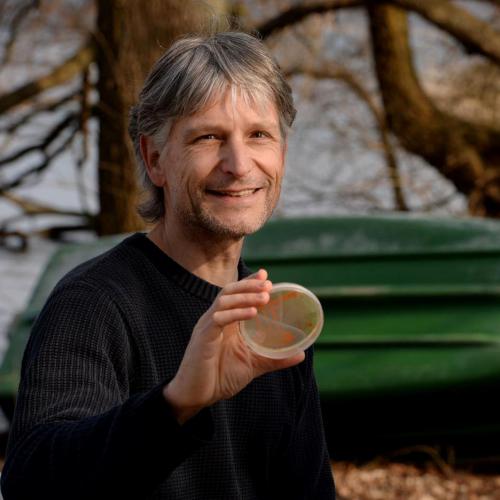
Mr Grossart, you recently quantified how much methane is released by sections of water bodies that are drying out. So what is the outcome?
Greenhouse gases such as methane and carbon dioxide are produced when microorganisms in particular break down organic substances from dead plants or dead animal tissue. If this happens under oxygen free conditions, methane in particular is produced, otherwise mainly carbon dioxide is formed through respiration processes. Most methane is released directly at the beginning of drying out from the sediment and when the areas are rewetted by heavy rainfall – so-called first flush events.
According to our projections, dry inland waters emit 2.7 million tonnes of methane per year and emissions will continue to increase with the expected rise in temperature. The type of water body itself and the climate zone do not have such a strong influence on the amount of greenhouse gases released, especially methane. The content of organic matter in the bottom of the water body in interaction with the local temperature and the humidity are the decisive influencing factors. Therefore, global warming in combination with the ongoing eutrophication of water bodies will certainly further boost emissions, which in turn accelerates global warming. This cycle can only be broken through active policy measures.

Ms Tetzlaff, groundwater is an invisible water resource for surface waters. How can you make more water reach deep layers and be available there?
In fact, falling water levels are not only directly related to rising temperatures and higher evaporation. Secondary effects – such as the increased extraction of groundwater for irrigation or drinking water production – obviously also play a role. Many water bodies – in particular in the region of Brandenburg – are fed by groundwater. Their conditions and development are therefore directly linked to the groundwater level, which has also declined in recent years. The problem with groundwater is that it gets replenished by precipitation input with a considerable time lag. In the Demnitzer Mühlenfließ in Brandenburg, for example, we were able to show that it takes up to 4 years for the reserves to be replenished after a rainy years. However, there are many measures to improve the water flows into the groundwater: through a targeted selection of vegetation (to control transpiration and evaporation) and measures to improve soil characteristics, e.g. to increase infiltration and storage capacities. Further, restoration of peatlands is important and even beavers can help – the water is stored for longer in our landscapes, slowly recharges to groundwater and groundwater recharge rates increase.
Photos: David Ausserhofer/IGB), private (1)
Hydroclimatic variability and riparian wetland restoration control the hydrology and nutrient fluxes in a lowland agricultural catchment
Modelling ecohydrological feedbacks in forest and grassland plots under a prolonged drought anomaly in Central Europe 2018–2020
Cross-continental importance of CH4 emissions from dry inland-waters
